- Sichuan -
Called the Land of Abundance, is in abundance of diverse natural resources and cultural heritages, and has been one of the hot destinations for many travelers to China. Central Sichuan is also home to the giant panda. To the north the visage changes into a fairyland of alpine valleys and blue-green lakes. Sichuan’s Tibetan face appears as you venture west. This is Kham, one of the former Tibetan prefectures: a vast landscape of plateau grasslands and glacial mountains where Tibetan culture still thrives and you’re certain to have your most challenging, yet most magical, experiences.
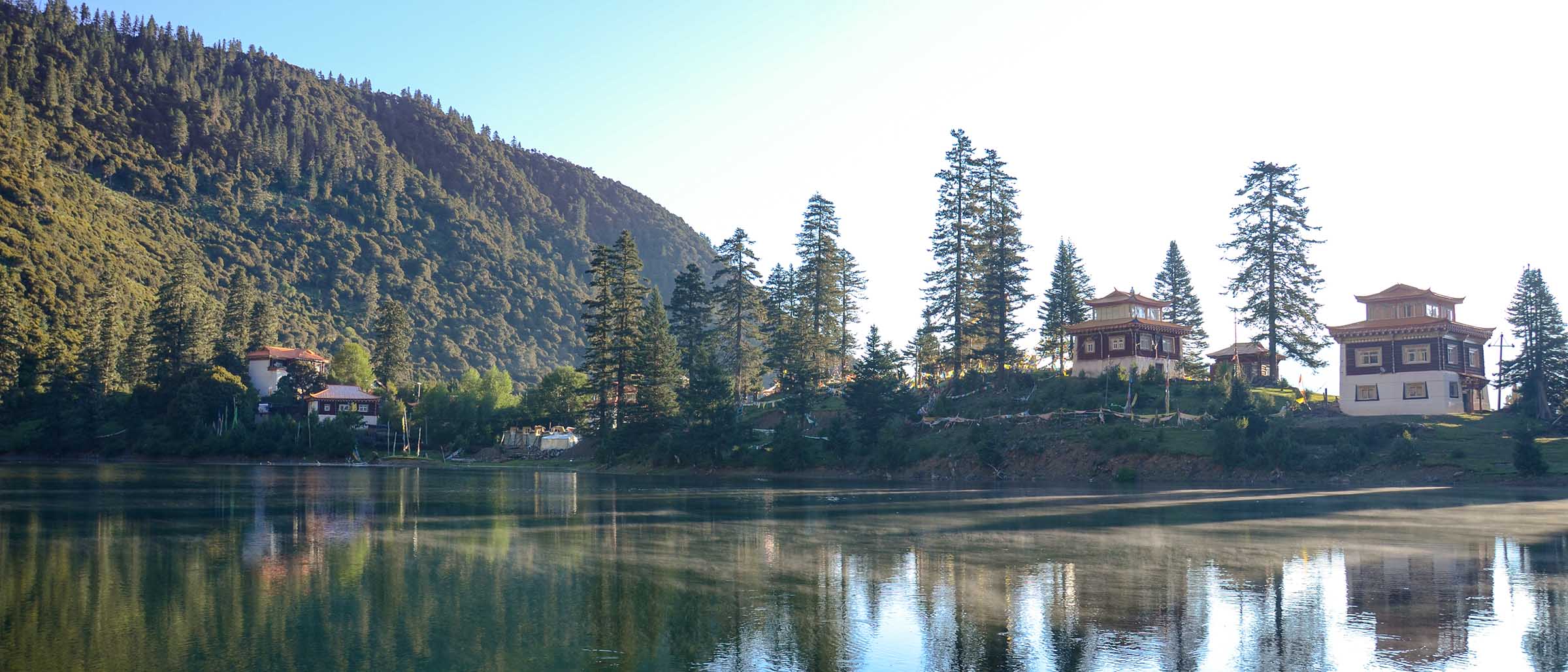
Basic Information
Chinese Name: 四川(Sichuan)
Location: the upper reach of the Yangtze River and the hinterland of Southwest China.
Provincial Capital: Chengdu
Acreage: about 485,000 square kilometers.
Famous Cities: Chengdu, Leshan, Jiuzhaigou, Kangding
Population: 83,750,000 (2019) in total; 55 ethnic groups with a population of 4.91 million(2010) in Sichuan.
Major Ethnic Group: The Han, Yi, Zang, Qiang, Miao, Tujia, Lisu, Naxi, Buyi, Bai, Zhuang, and Dai are indigenous ethnic groups in the Province.
Sichuan History
The Sichuan Basin and adjacent areas of the Yangtze watershed were a cradle of indigenous civilizations dating back to at least the 15th century BC, coinciding with the Shang in northern China. The region had its own distinct religious beliefs and worldview. The earliest culture found in the region through archaeological investigation is the Baodun culture (c.2700–1750 BC) excavated in the Chengdu Plain.
Concise History Thereafter
Han Dynasty (206BC-220AD) – The area became the center of world's lacquer craftwork and the birthplace of tea culture with advanced technology of Shu Brocade.
Five Dynasties period (907-960) – the emperor of Later Shu planted hibiscus all round the city wall, hence Chengdu got the nickname, Furong Cheng (Hibiscus City), or Rong Cheng for short.
Tang Dynasty (618-907) – Engraving typography was first invented and used here.
Song Dynasty (960-1279) – Chengdu led the list, being a foremost prosperous city on a par with Yangzhou which had the busiest water transport and port in China at that time. The earliest paper currency in the world 'Jiao Zi' was issued there during the Northern Song Dynasty (960-1127).
Ming (1368-1644) and Qing (1644-1911) dynasties – The previously flourishing city vanished during the war during the late Ming Dynasty but its economy made a gradual recovery during the Qing Dynasty. Through two expansions during Kangxi and Qianlong Periods, a grand new city evolved once more. Following the Opium War, the city went into a decline and its role overtaken by Chongqing.
In modern times, the city was re-established as the capital of Sichuan Province in 1928, and has remained so following the foundation of the PRC.
Sichuan Culture
As early as in the trace of human activity, the Wushan people and Ziyang people once lived in Sichuan. A saying goes like this, “The people from western and eastern Sichuan shared the same ancestors.” As Chinese civilization developed, the culture of Sichuan glowed with dazzling light in successive dynasties. Up until now, Sichuan remains a renewed and important part of Chinese culture.
With long history and strong cultural background, Sichuan boasts profound culture with various distinctive features. Characterized by incredible Sichuan Opera, fabulous Sichuan Cuisine, tea culture, and the local leisure life, Sichuan culture provides great fun and interesting activities to enjoy.
In the markets and streets as well as the village roads throughout Sichuan, you can see teahouses with unique Sichuan styles. Sitting in bamboo chairs, people gather around wooden tables, hold special tea wares exclusively owned by the teahouse and take a sip of fragrant tea.
Sichuan Grography
Sichuan province is located in western central China. The easternportion of the province has countless winding and spectacular rivers, most of them tributaries flowing southward to the Yangtze (Chang Jiang) — including the Min River. The western border with Tibet (Xizang Zizhiqu) follows the basin between the north-south running Ningjing and Shaluli mountain ranges in the west and east respectively. Sichuan also shares a border with Qinghai in the northwest and Shaanxi in the northeast. East of the Shaluli range, the Daxue range runs roughly parallel. East of the Dadu River from Daxue Shan, the Qionglai Mountains run northeast with the eastern edge falling sharply and ending the Tibetan Plateau. South of Qionglai Shan the Tibetan Plateau ends similarly with the southeast running Daliang Mountains. Sichuan also borders Hubei, Hunan, and Gansu provinces
Sichuan Climate
Sichuan is located in the transitional zone between Qinghai-Tibet Plateau and the eastern plains and therefore has complex and diverse climates with rather obvious regional differences and vertical changes. There are distinct disparities between east and west Sichuan as well.
The overall characteristics of Sichuan’s climate can be summarized as follows: monsoon climate is obvious and rain and heat happens in the same seasons; regional climate differences are prominent in that the east is characterized by warm winters, early springs, hot summers, rainy autumns, much cloud and fog, little sunshine and a long growing season while the west is characterized by coldness, long winters, almost no summer, sufficient sunshine, concentrated rainfall and distinct dry and rainy seasons; vertical climate changes are significant and climate types are varied; meteorological disasters happen in various forms with a high frequency and large scope, which are mainly droughts, rainstorms, floods and cold weather.e:
The best time to travel in Sichuan is in spring and autumn, especially in February and March, July to October. Spring is dry in Sichuan lowlands and south area, with little but concentrated precipitation on the plateau. Summer is hot in Sichuan lowlands and south area, but on the plateau, there seems no summer. In July, the temperature has reached 25ºC to 29 ºC in the lowlands, 11 ºC to 17 ºC on the plateau, and 22 ºC to 26 ºC in the south. Autumn is rainy season in Sichuan lowlands and south area, but is with strong sunshine on the plateau. Winter is warm in Sichuan lowlands and south area, but a little cold on the plateau. In January, the temperature may be 3 ºC to 8 ºC in the lowlands, -9 ºC to 3 ºC on the plateau, and 8 ºC to 13 ºC in the south.
Tourism Resources
Called the Land of Abundance, is in abundance of diverse natural resources, and has been one of hot destinations for many travelers to China.
It's fitting that an ancient form of opera and magic called bianlian (face-changing) originated here, for Sichuan is a land of many guises. Capital Chengdu shows a modern face, but just beyond its bustling ring roads you'll find a more traditional landscape of mist-shrouded, sacred mountains, and a countryside scattered with ancient villages and cliffs of carved Buddhas.
Central Sichuan is also home to the giant panda, the most famous face in China. In the south, expect a veil of history and a muted beauty that sees far fewer travellers than the rest of the region.
To the north the visage changes again into a fairyland of alpine valleys and blue-green lakes. Sìchuan’s Tibetan face appears as you venture west. This is Kham, one of the former Tibetan prefectures: a vast landscape of plateau grasslands and glacial mountains where Tibetan culture still thrives and you’re certain to have your most challenging, yet most magical, experiences.Most of western Sichuan, rich in tourism resources, still remains untapped and awaits the exploration by visitors.Once stepping on the Land of Abundance, you can enjoy the fun of travel as much as you can.
You can appreciate a wide variety of beautiful landscape including sacred & mysterious mountains, fairyland of alpine valley, blue-green lakes, vast landscape of plateau grassland, glacial mountains where Tibetan culture still thrives, beautiful waterfalls, limestone caves, evergreen bamboo forests…
Hot Destinations: Chengdu, Leshan, Emeishan, Dujiangyan, Daocheng, Kangding, Ganzar...
World Heritage Sites: Jiuzhaigou Valley Scenic Area, Huanglong Scenic Area, Leshan Giant Buddha, Mount Emei, Dujiangyan Irrigation System, Mount Qingcheng, Sichuan Giant Panda Sanctuaries (like Wolong Panda Reserve)
Other Popular Attractions: Mount Siguniang, Yading Scenic Area, Danba Tibetan Village, Xinduqiao, Hailuogou Glacier, Dagu Glacier, Ruoergai Grassland,
Featured Activities: Panda volunteering, Sichuan food cooking, hiking & walking, kung fu learning, photography, cultural travel, Buddhism & Taoism travels…
Sichuan Cuisine
Represented by the local dishes of Chengdu and Chongqing, Sichuan cuisine is a style of Chinese cuisine originating in the Sichuan Province of southwestern China. As one of China's Four Major Styles of Cooking, Sichuan cuisine features spicy, tongue-numbing, savory, delicious, oily and heavily seasoned flavor. Sichuan cuisine enjoys a time-honored history and is well-reputed home and abroad. In 2010, Chengdu was declared a “City of Gastronomy” by UNESCO Creative Cities Network.
Known as the "heavenly country", Sichuan highlights its abundance of food and natural resources. Therefore, Sichuan cuisine features the well-arranged and enriched seasonings, particularly the use of garlic, ginger, chili peppers, as well as the unique Sichuan prickly ash. All these seasonings create the characteristic pungency and spiciness of Sichuan cuisine.
Statistics show that the number of Sichuan dishes has surpassed 5,000. Some representative dishes include Kung Pao Chicken, Mapo Tofu, Fish-flavored Pork Shred, Twice Cooked Pork and Sichuan Hotpot.
Sichuan Festivals
As the land of abundance in China, Sichuan also has many ethnic minorities that boast brilliant and colorful festivals that worthy your time during your travel in Sichuan.
Litang horse racing festival
August 1st
The horse racing festival is held on August 1st annually on Litang County of Ganzi Tibetan Autonomous Prefecture of Sichuan Province. On that day, the herdsmen wearing splendid attire gather on Litang from far and near, celebrating the festival joyfully together. On the racing field, spectators can admire the galloping horses, breathtaking horse skill performances, unique plateau landscape with rich ethnic characteristics and an ocean of happiness. During the festival, there are huge crowds of people and a number of tents are set up on the grassland. Besides, a grand Buddhist ceremony is also held during the festival every year.
Xichang Torch Festival
Jun. 25th(lunar calendar)
Xichang Torch Festival of the Yi nationality is held annually on the 25th day of the six lunar month of the traditional Chinese calendar, lasting for three days. It is the traditional festival of the Yi nationality for driving away evil spirits and praying for a prosperous year. On that day, the local people and tourists from many other places gather there, dancing and singing joyfully in praise of the brilliant national culture and spirit. Xichang is the largest area in China, inhabited by the Yi nationality with rich ethnic customs. On the first day, the local people satisfy their stomach with mutton, beef and pure wine. On the second and third day, the climax of the festival reaches and people of all ages dressed in splendid attire gather together. The men participate in the traditional competitive sports, such as bullfight, horse racing and wrestling, while women are singing and dancing. At night, all the people holding torches sit together around the bonfire, dancing and rejoicing with wild excitement overnight. Thus, the torch festival is also celebrated as “the oriental Carnival”.
Siguniang Mountain Worship Festival
May 5th of lunar calendar
Siguniang Mountain Worship Festival is held on the May 5th of Lunar Calendar. On this day, local Tibetan (Jiarong Tibetan) from all different villages will dress their traditional clothes and gather together to celebrate it. The ancient religious rituals and joyful folk songs and dances will be performed to worship a harvest year.
Zigong Dinosaur Lantern Festival
Jan. 7th-Jan 15th of lunar calendar
The Dinosaur Lantern Festival in Zigong city is held around the Spring festival, which can be dated back to Tang (618-907) and Song (960-1279) Dynasties. During the festival, the China’s colorful traditional lantern made of bamboo, silk, paper and glass bottles will displayed, together with the colorful modern-style lanterns.
Leshan Giant Buddha
Name in Chinese: 乐山大佛 (Le Shan Da Fo)
Location: Lingyun Road, Shizhong District, Leshan City, Sichuan Province.(about 154 km away from Chengdu)
Ticket: Entrance ticket CNY80.00, Leshan cruise CNY70.00
Estimate tour time: 2-3 hours for climbing the buddha, 1H for taking cruise
Recommended time to visit: Whole year
Nearby attractions: Mount Emei, Oriental Capital of Buddhism
Authorized by: Echo Xing

Leshan Giant Buddha is located in Leshan City, where three rivers converge. The three rivers are Minjiang River, Dadu River and Qingyi River. The statue is Chiseled on the cliff of Lingyun Mountain, overlooking the confluence of the three rivers.
In 1996, Mr. Sancerre an expert from UNESCO came to Leshan. He claimed that the statue of Leshan Giant Buddha could rival any sculptures in the world, including Sphinx in Egypt. Then the Buddha was added to the list of world natural and cultural heritage by UNESCO.
Leshan Giant Buddha is also called Jiazhou Grand Buddha or Lingyun Grand Buddha. It is largest stone sculpture of Maitreya Buddha in the world. Maitreya Buddha is known as the Future Buddha. The sculpture is 71 meters(233 feet) in height, trice as high as the tallest Buddha figure in Yungang Grotto, Shanxi Province, 18 meters(59 feet) taller than the demolished Bamiyan Buddha of Afghanistan. The Giant Buddha’s head is 14.7 meters(48 feet) in height, and 10 meters(33 feet) in diameter. In addition, the Buddha has 1,021 hair buns on the head. Each of its ears is 7 meters(23 feet) long. Each of its eyes is 3.3 meters(11 feet) long. Its nose is 3.5 meters(11.5 feet) long. Each of the insteps 8.5 meters(28 feet) wide and 11 meters(36 feet) long. The instep is large enough to seat over 100 people. Each toes is longer than the total length of two adults. As an adult standing next to one of the feet, he is not as tall as the Buddha’s instep.
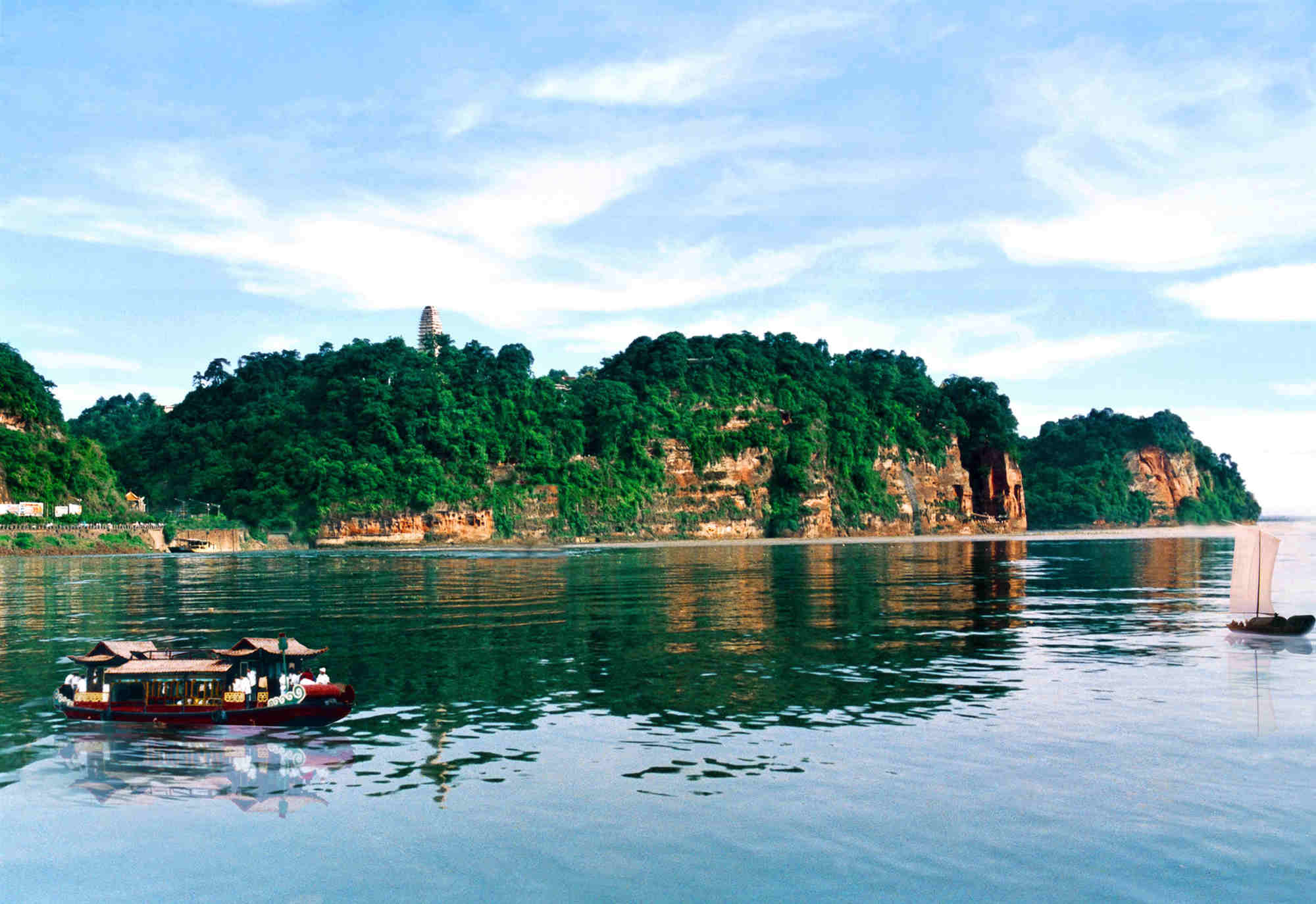
The initiator was Haitong Master. He was a monk from Guizhou Province. The monk traveled around the whole China, until he arrived at Mount. Linyun. During his stay in Lingyun Monastery, he saw that the three rivers rushed rapidly together forming dangerous spots for boating. Local people were suffering from the floods. Haitong Master was therefore determined to cut down stones and rocks off the cliff, so that the stones and rocks might level up the river bed and slow down the swift current. He started to collect funds for the Buddha carving. Unfortunately, Haitong Master passed away before the project was completed. The project began in 713, and completed in 803. It lasted 91 years, because of a shortage of funds. In fact, the project was effective in slowing down the rushing water current.
When the project was completed, the statue shone brightly with gilded gold and colored pattern. In addition, the whole body of the Buddha was sheltered by a wooden pavilion, which had 7 stories and 13 eaves. It was named as both the Grand Image Pavilion and the Grand Buddha Pavilion. Sheltered by the pavilion, the Giant Buddha looked extremely magnificent and splendid. Unfortunately, the pavilion was destroyed in the war by the end of Song Dynasty(960-1279). At present only the ruins of holes for the pavilion columns on the cliff are remained to remind us the former glory and splendour of the Giant Buddha.
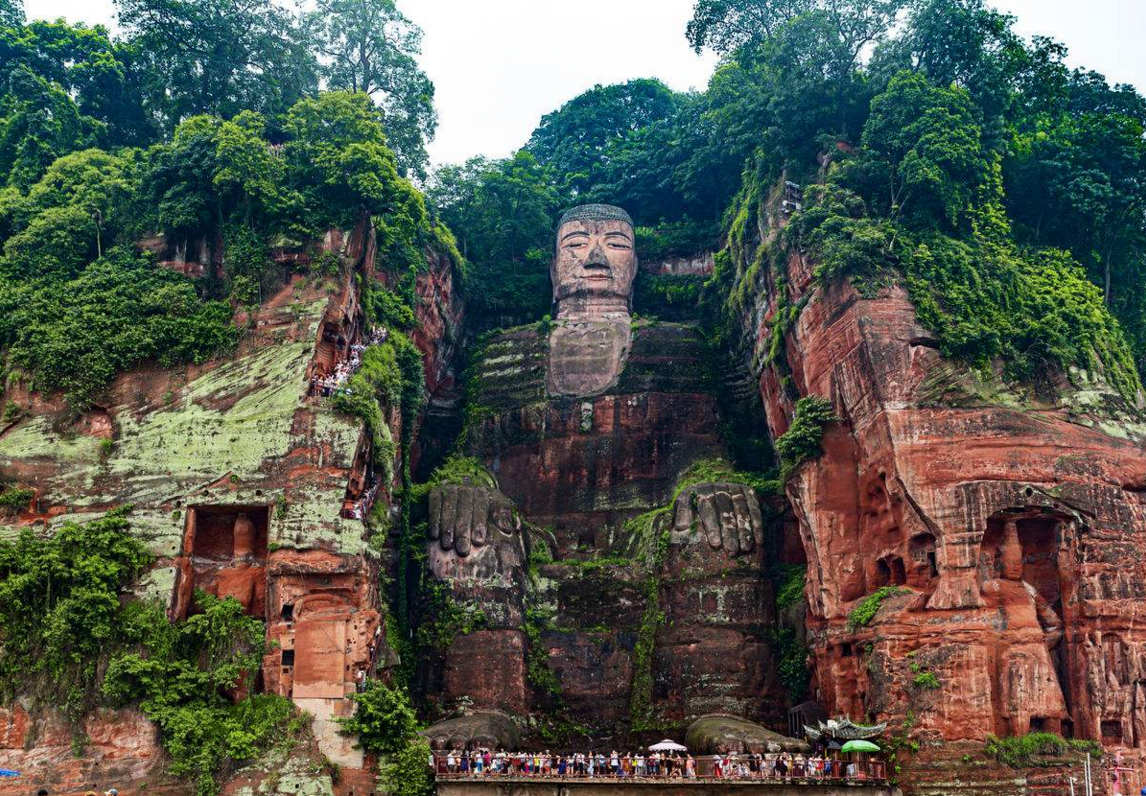
There the Giant Buddha has stood for 1,300 year, and still survives in good shape. It is due to its scientific drainage system. There are 18 layers of hair buns on the head. Crosswise drainage ditches can be found in the 4th, 9th and 18th layers. Ditches are carved on the Buddha’s robe collar and pleats too. Other two drainage ditches tie up the chest with the right arm. There are also some holes and cavities on the body. These ingeniously made ditches and holes form a scientific drainage and ventilation system, which has played an effective role in protecting the Buddha statue from being weathered and eroded.
Leshan Giant Buddha is the largest stone-carving art treasure in the world. It is honored as the classic-work of religion, hydraulic and carving art. The huge and majestic statue was created by the ancient craftsmen and artists with simple tools over one thousand years ago. It indicates that their talent was extremely great.
Leshan Giant Buddha travel tips
Lingyun Monastery
Lingyun Monastery was built between 618 and 620 in Tang Dynasty. It was rebuilt in 1667 during the reign of Emperor Kangxi. The monastery is located nearby the head of the Giant Buddha. There are three five halls placed on a east to west axis. The front gate is facing west. The halls include the Heavenly Kings Hall, Veda’s Hall, Mahavira Hall, Avalokitesvara Hall and the Buddhist Library. The Fore Heavenly Kings and Maitreya Buddha are enshrined in the Heavenly Kings Hall. The protector of Buddhism, Veda stands behind Maitreya. There are images of three Buddhas and eighteen Arhats laid in the Mahavira Hall for worship. The images of three Buddhas are Sakyamuni, Vairocana and Locana. They are called the Three Bodies of Buddha. Vairocana means completely illuminating in Sanskrit. He is considered as the embodiment of Darma or the Law. Locana means boundless enlightenment. His title indicates that anyone could get enlightened through their self-disciplined practice of Buddhism and become Buddha. Sakyamuni mean the saint of Sakya Clan. It is the title granted to the founder of Buddhism by his disciples. Sakyamuni Buddha is also called the Incarnation of Buddha transformed to master and enlighten the world. The image of Avalokitesvara is placed behind the three Buddhas.

The Sleeping Buddha
Visitors can see an image of Buddha lying on the surface of water, if they take a boat cruise for a panoramic view of the Giant Buddha statue. The Buddha is created in imagination with the silhouette of the hills.
The Night View of the Three Rivers
The boat cruise for night view of the three rivers has been operated since 2019. It is operated twice a day at Baxiandong Ferry Port. The boat sets sail at 8:00pm and 10:30pm between May and October, 7:30pm and 10:00pm from November to April.
How to visit Leshan Giant Buddha
It takes around two hours to get to the Giant Buddha from Chengdu by a car. There are two methods to visit the Buddha statue. The best way to have a panoramic view is to take the boat cruise. The boat moves to the front of the statue. Some visitors also hike the mountain to have a close look from the entrance gate. A paved path leads to the head of the Buddha and Lingyun Monastery. It takes about 15 minutes to get the Buddha’s head by walking up stairs. A nine-curved path spread down to the Buddha’s feet. It is quite steep. In both holidays and weekends, there is always a long queue of people waiting for stepping down stairs. In the peak season of tourism, it usually takes over two hours to reach the feet.

- $978.00
- 8D7N DAYS
01. Dagu Glacier, Arriving at the glacier of 4850m and staying with the wide and quite snow world, seeing No. 1 Glacier, and experiencing the powerful atmosphere of “standing on the highest mountain to view everything under their feet”02. …
Read More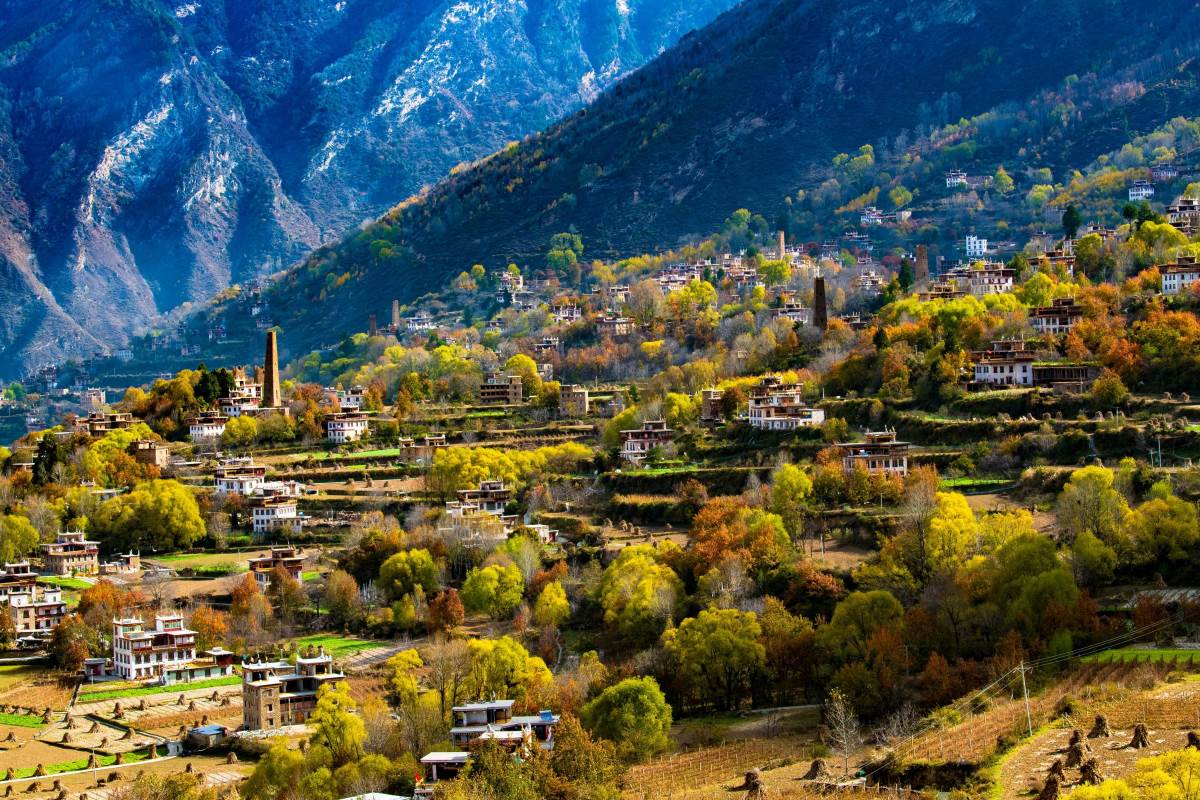
- $928.00
- 8D7N DAYS
01. Visit the world’s largest and most complete sanctuary for giant panda -Wolong Panda Reserve , where researchers are trying their best to release zoo panda to wild.02. Immerse yourself into the unique beauty of Western Sichuan in Mt Sigu…
Read More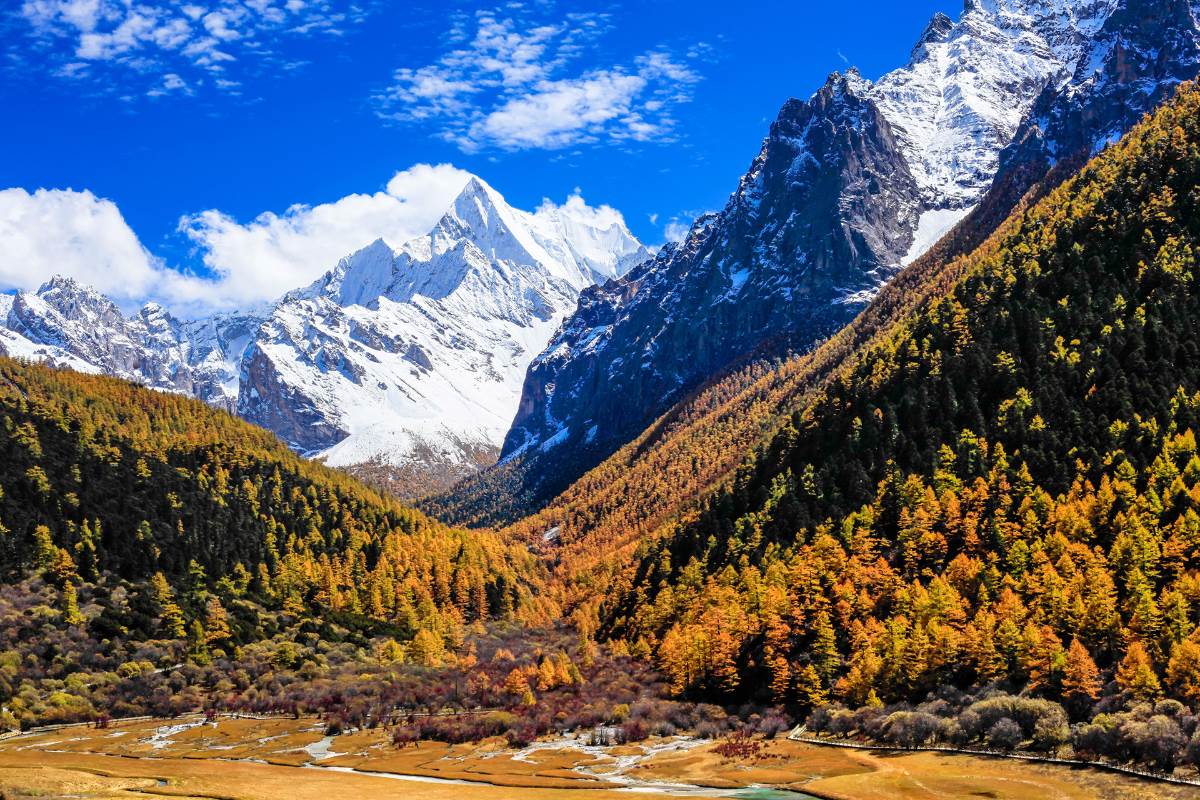
- $1028.00
- 9D8N DAYS
01. A classic photography tour deep into Danba, a county of watchtowers and China's top beautiful Tibetan villages, See different Tibetan people and also their unique Danba ancient stone towers, which was awarded as the top of the "…
Read More
- $548.00
- 6D5N DAYS
01. Visit Dujiangyan Irrigation System, explore the oldest and only surviving no-dam irrigation system in the world; and a wonder in the development of Chinese science.02. The famous place to enjoy the blossom of snow pear flowers in Jinchua…
Read More
- $USD598.00
- 6D5N DAYS
01. 2.5 days exploring Mt Siguniang by visiting Shuangqiao Valley and hiking Changping Valley and Haizi Valley, immerse yourself into the unique beauty of Western Sichuan in this Siguniang Trekking tour. Have a remarkable hiking to the Mount…
Read More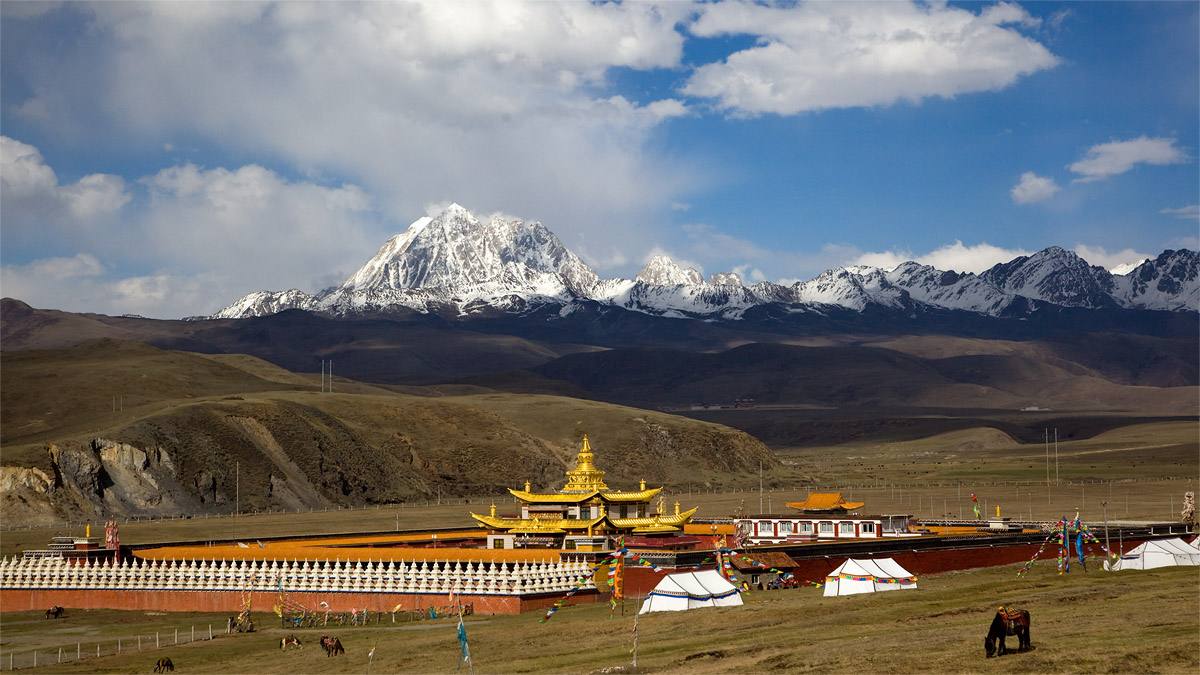
- $USD898.00
- 8D7N DAYS
01. Along the way, no matter on bus or during hiking, we will be surrounded by vast grasslands, forests, lakes and spectacular snowy mountains. Immerse in the amazing views, and feel the beauty of being close to nature!02. Walking in Danba T…
Read More
- $788.00
- 7D6N DAYS
01. A great tour of a visual feast to explore two magnificent World Heritage Site around Chengdu - Leshan Giant Buddha and Mount Emei in a leisure way.02. Enjoy the “king of shu mountains” Hailuogou Glacier , Hiking through the attractive …
Read More
- $1380.00
- 11D10N DAYS
01. A holy pilgrimage route that covers several topical Tibetan Buddhists monasteries in west Sichuan.02. splendid nature sceneries include grassland, snow-capped mountains, plateau lakes etc, ancient Tibetan villages, sacred monasterious, a…
Read More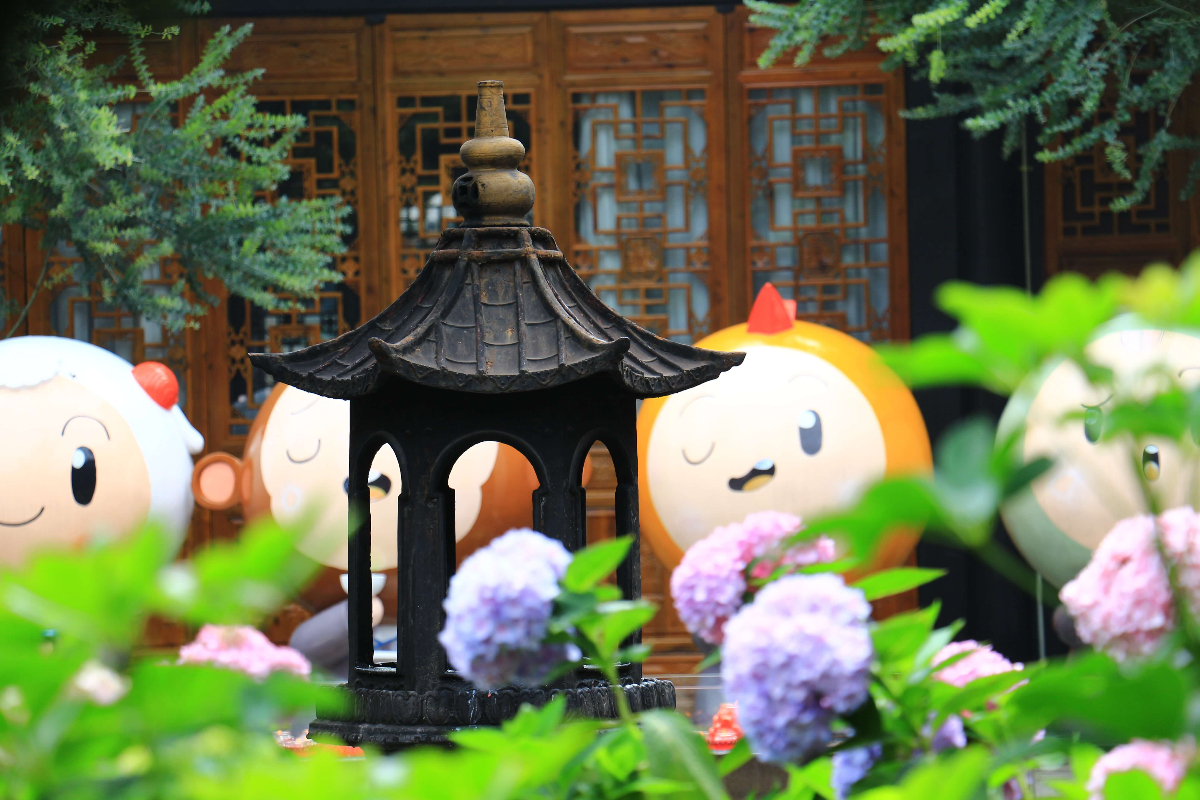
- $728.00
- 7D6N DAYS
01.Meet the lovely pandas in the Panda Breeding and Research Center, Getting a close-up look at China's most iconic residents.02. Enjoying a cup of traditional Chinese tea and absorb the special atmosphere of Chengdu.03. Play with Sichua…
Read More
- $680.00
- 8D7N DAYS
01. Have a walk in the believed-to-be “Paradise of Photographers” Xinduqiao to experience local Khampa Tibetan landscape and local people,enjoying the endless sub-alpine meadow, scattered yaks in Xinduqiao.02. Visiting the highest town in …
Read More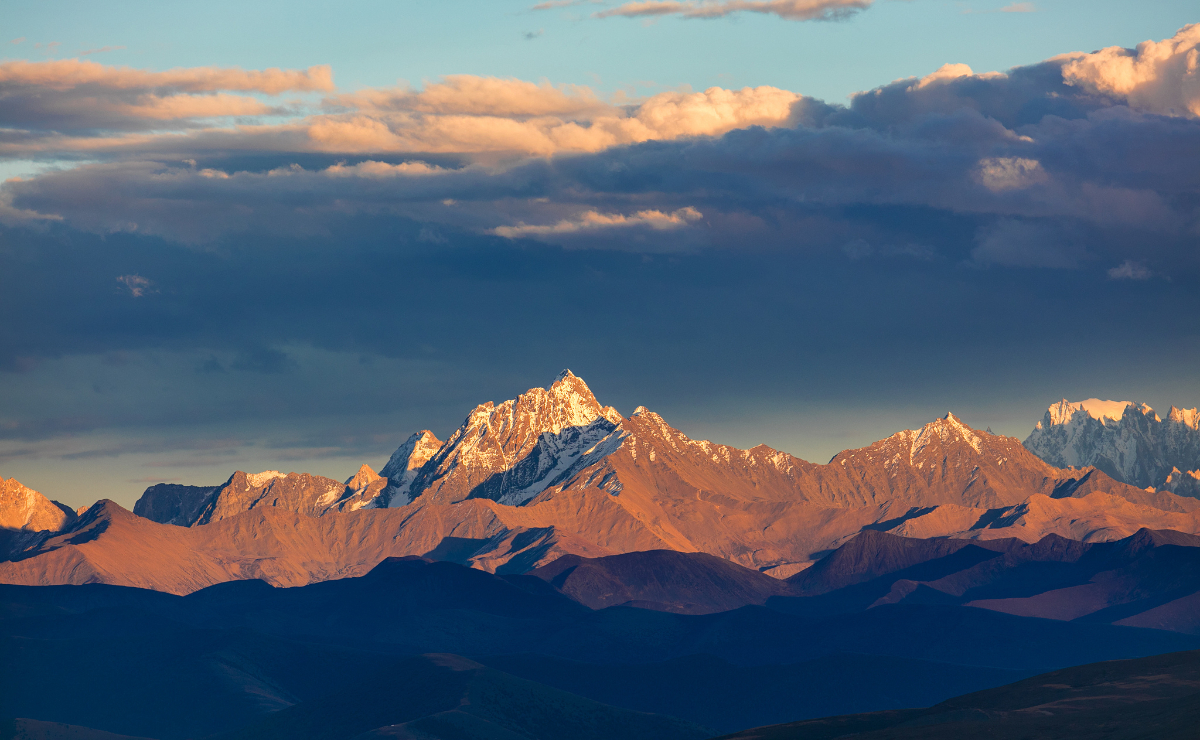
- $1380.00
- 9D8N DAYS
01. Trek beneath Minya Konka (7556m), the highest peak beyond the Himalaya, meet the distinctive Khampa and Minyak communities of the Kham region02. Be surrounded by vast grasslands, forests, lakes and spectacular snowy mountains. Immerse in…
Read More